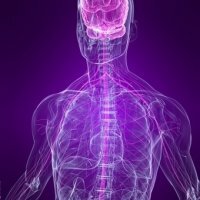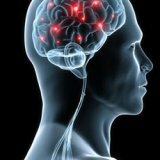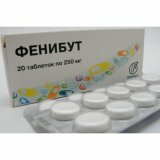Treatment of diseases of the nervous system

Therapy of diseases of the nervous system is based on three methodological principles that are directly related to understanding the essence of the disease. These include pathogenetic, etiological and symptomatic treatment.
Etiological treatment aims to eliminate the cause of the disease, that is, it is a kind of "causal" treatment. This type of treatment is of the greatest importance when dealing with infectious diseases, since in most cases a sharp weakening or the destruction of harmful microorganisms leads to recovery. This type of treatment, as a rule, conducts with neuroinfections.
Pathogenetic treatment works with the mechanism of disease development. This type of therapy is recognized by doctors as the most important in medicine. The methods of pathogenetic therapy include such actions as stimulation of the body's immune forces, stimulation of compensatory possibilities, blocking of pathological influences and processes, and also restoration of the balance of internal reactions and processes.
The latter, symptomatic therapy, is used to combat individual symptoms of the disease. It is widely distributed as one of the main methods of therapy. Of course, eliminating the symptom without general treatment of the disease can create the illusion of significant improvement, but often this leads to complications in the future. But nevertheless among means of symptomatic therapy there are also those which not only help to eliminate this or that symptom, but also affect the mechanism of its occurrence.
Drugs for the treatment of
Means classified as dehydrating have a dehydrating effect. Neuropathologists use them to relieve the edema of the nerve trunks and the brain substance, and also if it is required to lower the intracranial pressure.
Psychotropic substances can have a wide variety of effects acting on the nervous system. The two main ones are exciting and inhibitory. Of this group of drugs, tizercin and aminazine are most often used.
The sedative soft preparations include the root of valerian, trioxazine, seduxen, sodium bromide, motherwort grass, elenium, and tazepam. To stimulants - sydnokarb, caffeine. To remove high pressure, use melipramine, amitriptyline.
Using in different combination of psychotropic substances, it is possible to achieve increased efficiency, reduce excitability and distraction, improve mood. Some of these drugs cause muscle relaxation, so they are often used in the treatment of hyperkinesia and speech disorders.
For a variety of seizures, there are many antiepileptic drugs. The main ones are carbamazepine, valproic acid preparations, etc.
There are also means for improving the processes of metabolism in the nervous system. Indications for their appointment are states after traumatic brain injuries, hemorrhages, neuroinfections, delayed speech, mental or motor development.
Drugs used to improve the performance of impulses are prescribed for restorative therapy of paresis and paralysis. The most frequently prescribed are galantamine, proserine, dibazol.
Other methods
Also, in addition to medicamental agents, other effects on the body are also used. Physiotherapy includes mud therapy, water procedures, exposure to electromagnetic and electric fields, heat, various ions, etc.
Therapeutic exercise and therapeutic massage are becoming increasingly important in the treatment and recovery activities conducted with organic lesions of the central nervous system.
Acupuncture is also used. This is a method based on using the knowledge of ancient medicine of the East. In special points on the human body, silver, gold or steel needles are introduced in a special way. One of the varieties of the technique is the impact on these points with the help of a weak electric current
Psychotherapy is a therapeutic effect on the patient's psyche in one way or another. It is important to take into account the situation in which the patient is and how it affects it( beneficially or not).



